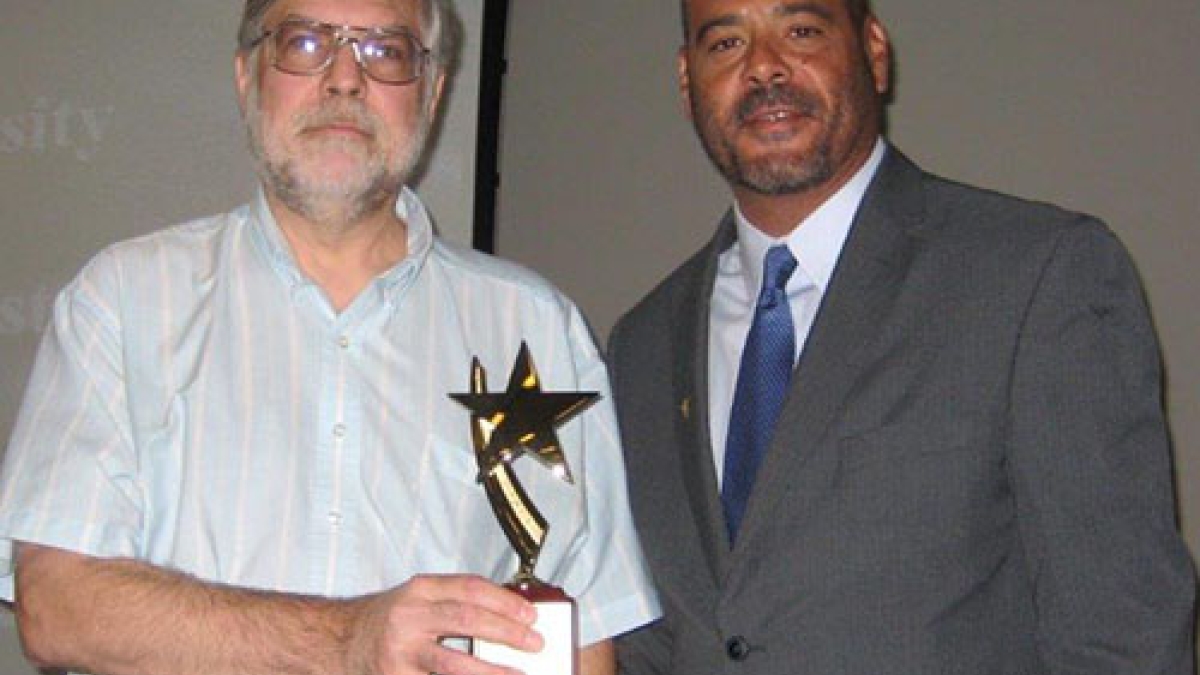ASU archaeologist lauded for inclusivity

“When you have life experiences where you are often treated differently because of some aspect of your identity, a place where you are treated equal to everyone else – and that treatment is positive – is a sanctuary.”
Those words from Arizona State University anthropology graduate student Juliana Novic speak to the spirit and value of the ASU Committee for Campus Inclusion’s Excellence in Diversity and Inclusion Awards.
Novic nominated her faculty advisor, Mesoamerican archaeologist Michael E. Smith, for creating a sanctuary of learning for all of his students. Last month, Smith accepted the 2014 award in the academic professional/faculty category at a breakfast ceremony on the Tempe campus.
“Mike treats everyone with the same respect and offers everyone the same opportunity,” Novic says. “The only thing that matters is your interest and education. Your social status, position, gender, race, ethnicity, religion, sexuality, age, immigrant or disability status doesn't matter or impact how you get treated or what opportunities you are offered in his research lab.”
Smith, a professor in the School of Human Evolution and Social Change in the College of Liberal Arts and Sciences, is known for his dedication to his students and for offering undergraduates and graduates alike field, lab and classroom experiences that build skills and boost résumés.
Former Smith student and advisee Jeanette O’Neil-O’Callaghan said that she is impressed by the diversity of Smith’s undergraduate and graduate students, as well as the fact that Smith fosters open and honest dialogue.
According to her, “All points of view, regardless of academic level, are encouraged in his lab and classroom.”
She adds that Smith goes above and beyond to help his students find their own scholastic paths without forcing his own preferences on them. He also encourages them to read widely and get to know as much as possible about the world and its peoples – past and present.
When O’Neil-O’Callaghan moved on to the art history program at ASU, Smith offered her an available desk in his lab and continued to include her in discussions with current students.
“Dr. Smith knows implicitly that archaeology does not exist in a vacuum. It needs the input of many diverse fields and people to accomplish its goals and advance its course,” she explains. “He didn’t care that I was no longer a student in his school. I was an Aztec scholar in training, and my point of view was welcome.”
Novic is proud of Smith’s win and the message it sends. “I think it is important for our school that one of its faculty was honored for something meaningful like this,” she says.
The recipients of the ASU Committee for Campus Inclusion’s 2014 Excellence in Diversity and Inclusion Awards are:
Jordan Hibbs – ASU Student, Undergraduate
Marcelino Quiñonez – ASU Student, Graduate
Tyderyon Neal – ASU Staff
Michael E. Smith – Academic Professional/Faculty
Cesar Chavez Leadership Institute – ASU Group or Organization
Belinda Chui – Community Individual
Indigo Cultural Center – Community Group or Organization.

